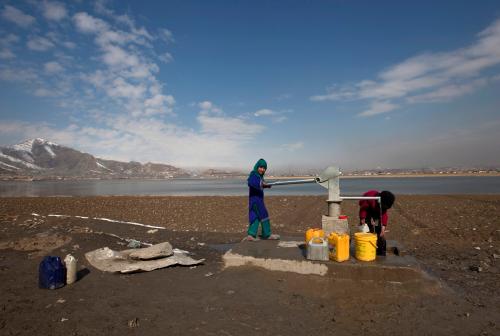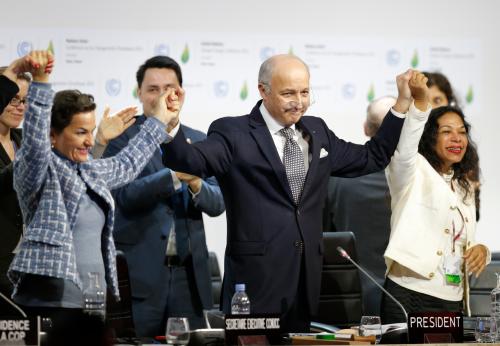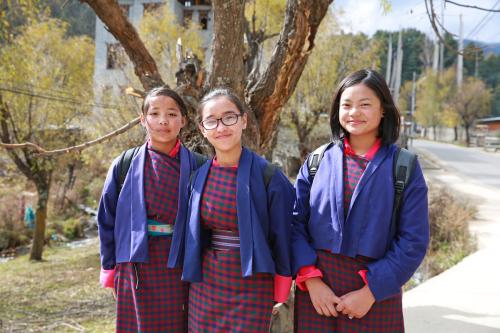This blog is the second of a four-part series related to a new paper on girls’ education and climate change, including an overview of the research, reproductive rights, fostering climate participation and leadership, and life skills for a green economy.
While climate change strategies have been largely gender-blind, the one woman-centered strategy that has captivated demographers and girls’ education advocates alike for decades is that of fertility.
The link between higher levels of schooling and lower rates of fertility for women shows that an investment in girls’ education is, indirectly, an investment in climate change mitigation by curbing population growth within the planet’s carrying capacity. A woman who has completed secondary school will likely have one fewer child over her lifetime than a woman who has only completed primary school. She tends to be older when she marries and first gives birth, has more space between births, and has increased access to job opportunities that keep her from a cycle of constantly bearing children without planning. Projections have also demonstrated that if every woman in the world since 2008 received a secondary education, the population in 2050 could be 3 billion less than if women’s education levels remained the same at that time. More recent projections show that if by 2014 every girl and boy had been on track to receive 13 years of schooling, the population in 2050 would be 1.5 billion less, and by 2100 be 5.7 billion less. It’s therefore no surprise that population has been at the center of women’s engagement in climate action.
But the ethical issues around adopting this approach to girls’ education, fertility, and climate change are many. To focus solely on reducing fertility rates places a burden on the reproductive decisions of girls and women in developing countries and ignores the role of unsustainable development, consumption, and technologies for which developed countries have largely been responsible. Studies suggest that from 1850 to 2011 countries in the developing world contributed to only 21 percent of the carbon emissions, but in 2015, they paid 78 percent of the social cost of climate change through greater exposure to natural disasters, weaker infrastructure, and less reserve capital on which to fall back.
So how then can we leverage girls’ education to address one of the underlying unsustainable trends contributing to climate change? In our latest report, Three Platforms for Girls’ Education in Climate Strategies, we suggest that girls’ whole lives matter and their reproductive health is rights-based. Two hundred and fourteen million women who would like to avoid pregnancy are struggling to access reproductive health resources and information, and the majority of them live in the 69 poorest countries in the world—also where projected population growth is expected to double by 2053 and where women’s education levels are the lowest. But a whole-life approach means developing their knowledge, skills, and attitudes through a quality education from a young age through young adulthood.
Gender actors that focus on women’s empowerment and rights through education and health, like CARE and Plan International, as well as those focused on keeping girls from early, forced, and child marriage, like Girls Not Brides, are key actors. Their efforts contribute to reproductive rights by educating girls on contraceptives, making services available to them, and ensuring that they avoid pitfalls like early marriage that lead to early and often unsafe pregnancies. Environmental conservation actors like Blue Ventures, Pathfinder International, and Sierra Club are now undertaking women’s empowerment and reproductive health. They have been prioritizing women’s access to family planning services in coastal communities alongside their conservation work in Madagascar, Kenya, and Uganda, for instance.
But efforts within the public health community targeting adult women have not coalesced around important work happening in girls’ education. For example, the relationship between early marriage, school dropout, and early childbearing are essential to consider when building women’s resilience and adaptive capacity to climate change and weather-related disasters. But there is little cohesion between actors focused on different points in a girl’s or woman’s life.
Research suggests that family planning is more cost-effective than many technical solutions like investing in clean energy technology. Reducing 34 gigatons of carbon in the atmosphere would cost $220 billion if addressed through family planning as opposed to $1 trillion if addressed through low-carbon technologies. But family planning together with investments in girls’ education are even more effective. Together, these solutions could result in 119.2 gigatons in reduced atmospheric carbon—far lower than the top-rated technical solution of improved management of harmful chemical refrigerants at 89.74 gigatons reduced.
To ensure that sectors collaborate and that climate action dollars go further, overseas development aid accountability systems like the OECD Development Assistance Committee and climate financing mechanisms like the Adaptation Fund must tune into the important role that investing in girls’ education and girls’ reproductive rights plays in climate mitigation and adaptation. This could be as simple as re-coding the OECD DAC gender markers to include girls’ education and reproductive health as a climate aid gender marker alongside existing gender markers. The Adaptation Fund could also simply focus on girls’ education as a strategy to increasing women’s resilience.
Thus far, girls’ education has not been leveraged to its full potential in guaranteeing girls’ and women’s reproductive health. And while actors have worked for decades to provide women with more services, they have been unable to ensure that those services are accessed and that behavior changes. The global community, together with public health actors, gender organizations, and girls’ education actors, must collaborate to expand the reach of these respective efforts. We must look toward a holistic, rights-based approach to girls’ and women’s reproductive health to safeguard not only the future of those girls and women, but also the future of our planet.







Commentary
Promote girls’ reproductive rights in order to ensure equitable climate action
October 5, 2017